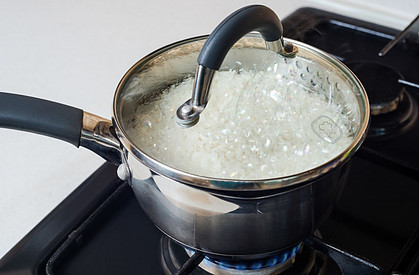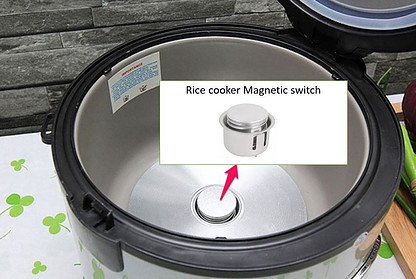Rice cooker is an essential electrical appliance for families who make rice as their staple food.
Many people use a rice cooker but most people don’t know how exactly it works.
The amazing part of a rice cooker is it knows when to stop cooking.
The rice cooker actually does an automated job for you after the rice and water has been placed inside the inner pot. After turning on the power the rice cooker will do the job for you until the rice is ready for serving, and you can do other tasks at the same time.
Without a rice cooker, you have to pay attention to the rice while cooking it until the rice is done, this is the value of a rice cooker that is able to take care of the rice cooking process for you.
Here I am going to discuss the working principle of the rice cooker and how it knows when to stop cooking.
Table of Contents
Working principle of rice cookers (and how do rice cookers know when to stop cooking)
The rice cooker will continue to cook the rice when the water temperature is constant at boiling point 100 degree celsius until the water is completely vaporized and absorbed by rice grains. Then the rice cooker inner pot temperature will rise above 100 degree C temperature. After that, the magnetic switch will lose its magnetic properties due to temperature above 100 degree C and open the circuit. When the circuit opens, the rice cooker will stop cooking and turn into warming mode.
How to cook rice without rice cooker
Before that let’s figure out how the rice cooking process can be done without a rice cooker.
First you put the rice and water (1 to 1 ½ ratio) into a pot and put on a stove to heat it to medium high temperature.
The water inside the pot will keep boiling and the rice will absorb the water to become soft.
During the boiling process, you need to keep watching the boiling water to avoid the rice over cooking until burnt up when the water is completely heated into steam.
So a rice cooker is a device that is equipped with a control mechanism to help you monitor the rice and stop cooking when it is done.
physics nature of water
Before we enter into the working principle of the rice cooker, let’s figure out the physics nature of the water.
When water is heated, its temperature will rise until boiling point 100 degree celsius at sea level.
At boiling point, the water will keep evaporating with a constant temperature of 100 degree celsius until the water completely vaporizes.
What working principle stays behind the rice cooker?
Rice cooker main parts consist of the main body, inner pot, lid, heating element, temperature control mechanism, and buttons.
First, the water and rice are put into the inner pot of the rice cooker.
Then power on the rice cooker, the inner pot of the rice cooker is heated by a heating element at the main body.
The water will be heated until it reaches 100 degrees Celsius boiling point and starts to boil.
While the water is boiling, the water is evaporating and the temperature is maintained at 100 degree celsius.
The inner pot temperature will not exceed 100 degree celsius as it will be cooled off by the 100 degree celsius water temperature.
Once all the water was boiled into vapor and completely absorbed by the rice (became soft), then the rice cooker pot temperature will start to increase to exceed 100 degree celsius because no more water to cool down the pot temperature.
Once the rice cooker pot temperature is more than 100 degree celsius, the rice cooker temperature control mechanism will stop the heating process and turn to warming mode or totally switch off.
How does the rice cooker temperature control mechanism work?
Inside the rice cooker there is a magnetic switch.
The magnetic switch is made up of metal (with magnetic properties), magnet, and a spring.
When the pot is put into the rice cooker main body and power turned on, the metal and magnet are attached together and forming a closed circuit, and the heating element turned on for rice cooking.
The magnetic switch will be closed when the temperature is lower than 100 degree celsius, and will be opened when more than 100 degree celsius.
That mechanism is built upon that magnetic properties will be lost when the temperature is hot enough, above 100 degree celsius.
When the rice cooker inner pot is under 100 degree celsius, the magnetic switch is closed as the metal and magnet are attached together by spring.
When the inner pot reaches a temperature higher than 100 degree celsius, the magnetic properties of the switch will be lost and the spring will have enough strength to make the circuit open.
During the boiling point, the water in the rice cooker pot will be constant at 100 degree celsius.
Once all the water is completely turned into steam and absorbed by the rice grain, the rice and pot temperature will start to rise above 100 degree celsius.
When the rice cooker pot is above 100 degree celsius, the metal that is attached with the magnet will lose magnetic properties, the magnetic switch will be opened and stop the heating element continuing to heat the pot.
When the magnetic switch opens, the rice cooker will be set to warm mode.


